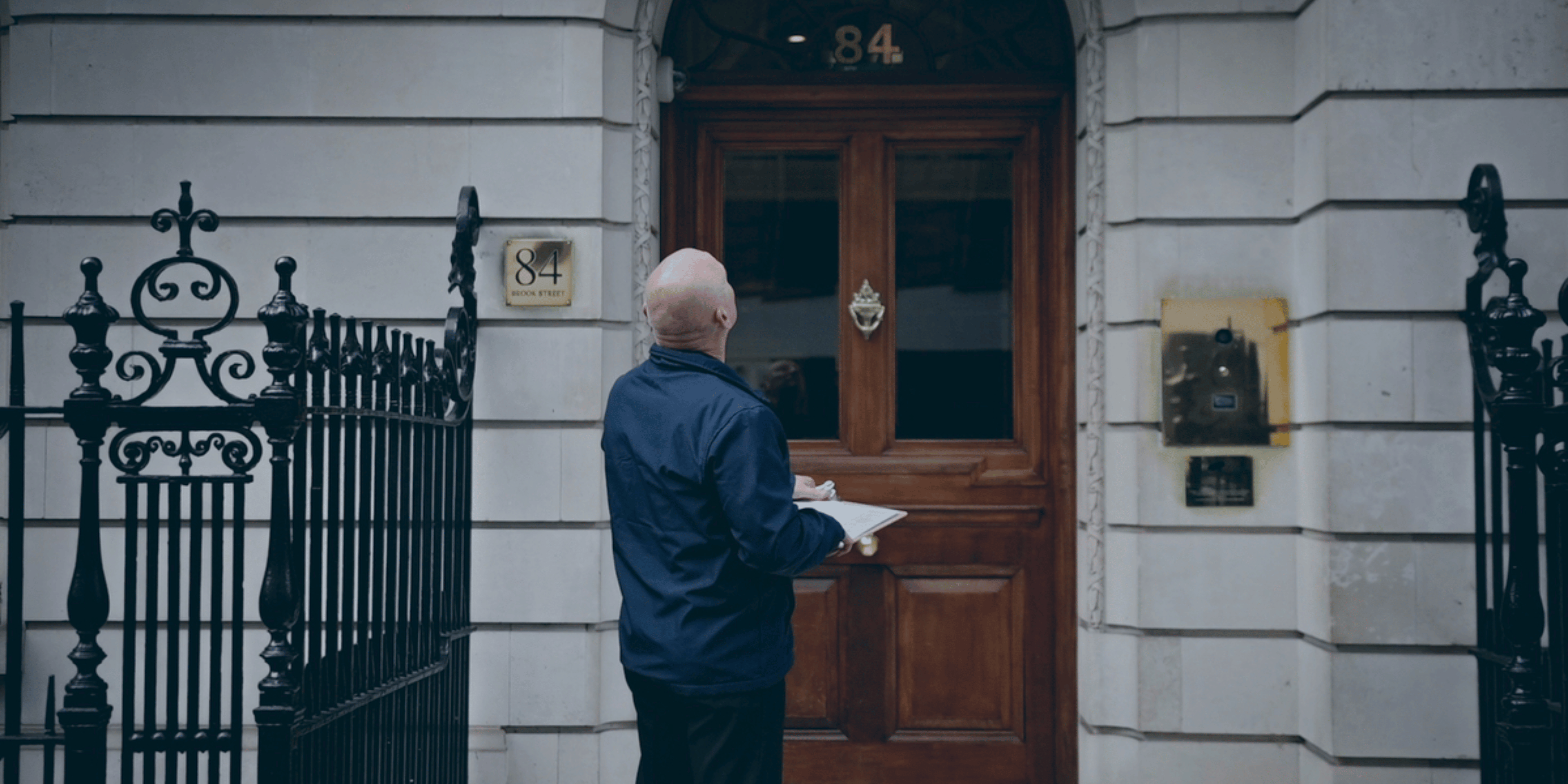
10 Essential Insights on CCTV in Workplace Law UK for Site Managers

Overview
The article titled "10 Essential Insights on CCTV in Workplace Law UK for Site Managers" presents a crucial fact regarding the legal and compliance requirements surrounding the use of CCTV in UK workplaces. Site managers are mandated to comply with regulations such as the Data Protection Act 2018 and GDPR. This compliance is not merely a formality; it ensures that surveillance practises are transparent, justified, and respectful of employee privacy.
The reality is that neglecting these regulations can lead to significant legal repercussions, including fines and damage to an organisation's reputation. For site managers, understanding these implications is essential, as the cost of non-compliance can far exceed the investment required to implement proper surveillance practises.
In practise, adhering to these regulations not only protects employees' rights but also fortifies the organisation's standing in the industry. By prioritising compliance, site managers can foster a culture of trust and transparency, which is vital for long-term business resilience.
The lesson is clear: proactive investment in compliant CCTV practises safeguards against greater losses in the future. Priority First stands ready to assist site managers in navigating these complexities, ensuring that their surveillance systems not only meet legal standards but also enhance overall operational integrity.
Introduction
The increasing reliance on surveillance technology in workplaces presents a significant challenge for businesses in the UK. This trend raises critical discussions regarding safety, compliance, and employee rights. As site managers navigate the complexities of CCTV regulations, they encounter an opportunity to enhance security while adhering to legal requirements.
The reality is that effective monitoring must be balanced with respect for individual privacy rights. Ignoring this balance can lead to serious consequences, including potential legal repercussions and damage to employee trust. Thus, understanding the intricacies of CCTV in workplace law is essential for site managers.
In practise, site managers must grasp key insights to navigate this intricate landscape. Priority First offers a measured approach, ensuring that security measures not only comply with regulations but also support broader business resilience. By prioritising security, companies can prevent greater losses in the future, reinforcing the idea that early investment in safety measures is crucial for long-term success.
Priority First CCTV Monitoring: Enhancing Workplace Security Compliance
Priority First Security Services provides advanced video surveillance monitoring solutions that significantly bolster security while ensuring compliance with CCTV in workplace law UK. Utilising sophisticated surveillance systems such as CCTV in workplace law UK, managers can conduct real-time observations of activities, which is a crucial aspect for meeting safety regulations and legal standards. This proactive approach mitigates risks associated with non-compliance and enhances overall site safety, particularly under CCTV in workplace law UK. Data indicates that environments equipped with surveillance cameras have seen a marked reduction in incidents, with adherence rates improving significantly.
Furthermore, advancements in AI technology empower these systems to detect unsafe behaviours, such as employees not wearing appropriate protective gear, and to effectively monitor compliance with health and safety protocols as outlined in CCTV in workplace law UK. Practical examples from various construction sites demonstrate that AI-integrated surveillance cameras have led to fewer accidents and improved operational efficiency. Additionally, Priority First excels in integrating its surveillance services with existing security systems, ensuring a seamless enhancement of site security.
However, it is essential to recognise potential drawbacks, including concerns regarding privacy invasion and diminished employee morale. As technology evolves, incorporating features such as automated incident reporting and real-time hazard detection positions surveillance cameras as indispensable tools for maintaining a safe and compliant workplace, particularly under CCTV in workplace law UK. Moreover, the integration of Hostile Vehicle Mitigation (HVM) strategies further fortifies site security, addressing vehicle-related risks and enhancing the overall safety framework.
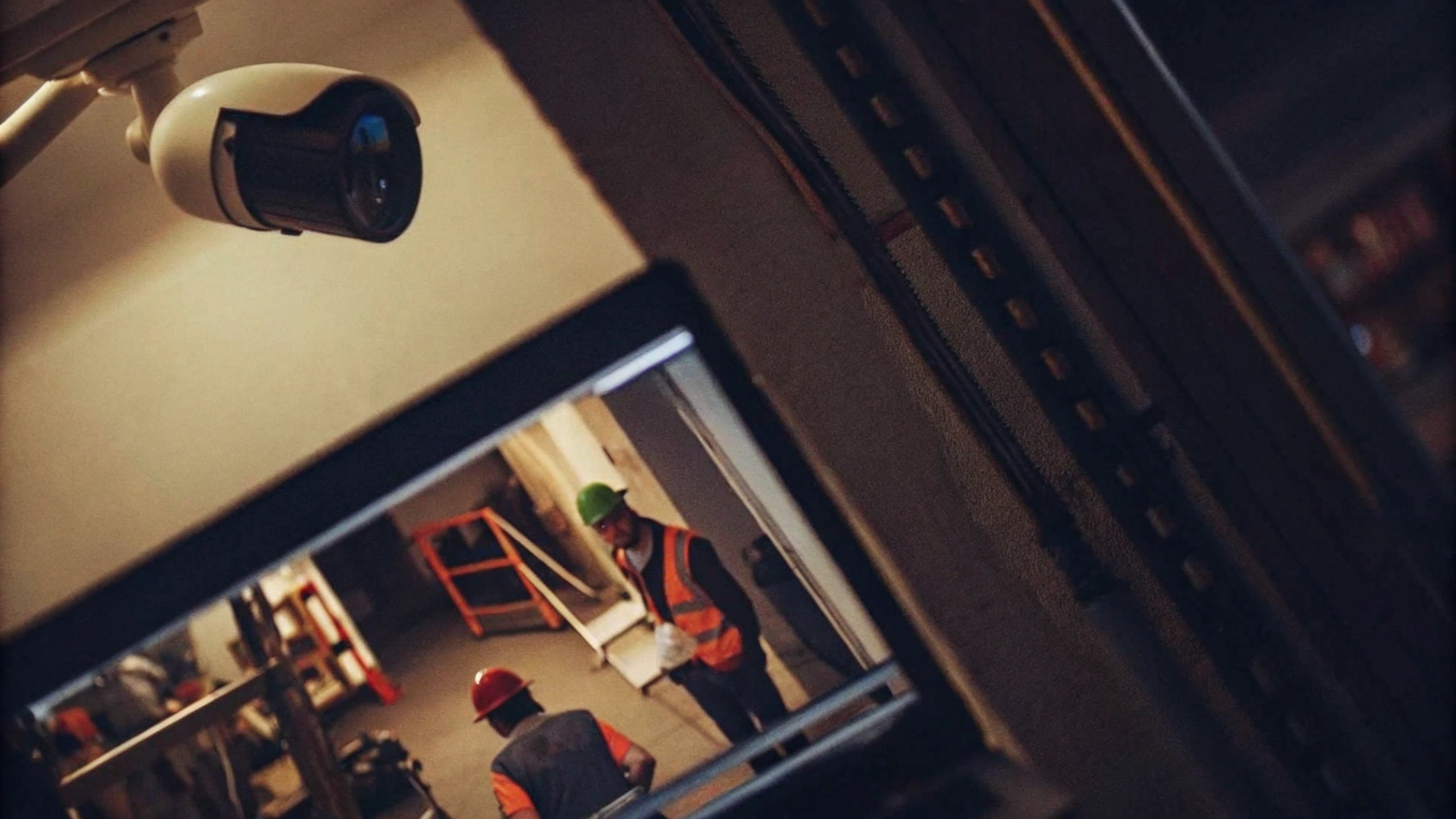
Legal Implications of CCTV Usage in the Workplace
The regulations surrounding CCTV in workplace law UK are dictated by the Data Protection Act 2018 and the General Data Protection Regulation (GDPR). These regulations require employers to implement surveillance for valid reasons, primarily focused on security and safety. Employers must inform employees about monitoring practices, including the reasons for surveillance and the locations of cameras, as required by CCTV in workplace law UK. Ignoring the regulations related to CCTV in workplace law UK can lead to significant legal consequences, including hefty fines and damage to reputation.
Organisations that neglect to conduct a Data Protection Impact Assessment (DPIA) before installing CCTV in workplace law UK may face penalties. The DPIA is vital for identifying potential risks associated with monitoring and ensuring that surveillance is justified and proportionate. Additionally, companies must register with the Information Commissioner’s Office (ICO) and may need to pay a data protection registration fee when establishing CCTV in workplace law UK surveillance camera systems.
Recent cases underscore the risks associated with improper use of CCTV in workplace law UK. In the case of City and County of Swansea v Gayle, covert surveillance was deemed justified due to a worker's misuse of paid hours. However, it also highlighted the necessity for transparency and compliance with privacy laws, particularly in relation to CCTV in workplace law UK. Employers must balance the need for monitoring with respect for employee privacy rights, especially under CCTV in workplace law UK, ensuring that surveillance is limited to areas with low expectations of privacy.
Moreover, organisations are expected to establish clear policies regarding the storage, sharing, and deletion of CCTV in workplace law UK footage, typically retaining it for no longer than 30 days unless required for ongoing investigations. Failing to implement these policies can lead to legal challenges and fines under the CCTV in workplace law UK and the Data Protection Act 2018.
In summary, compliance with the Data Protection Act 2018 and GDPR, along with CCTV in workplace law UK, is not merely a legal obligation; it is essential for maintaining trust and transparency in the workplace. Employers should consult legal experts to navigate the complexities of employee monitoring, especially regarding CCTV in workplace law UK, to ensure their practices align with current regulations.
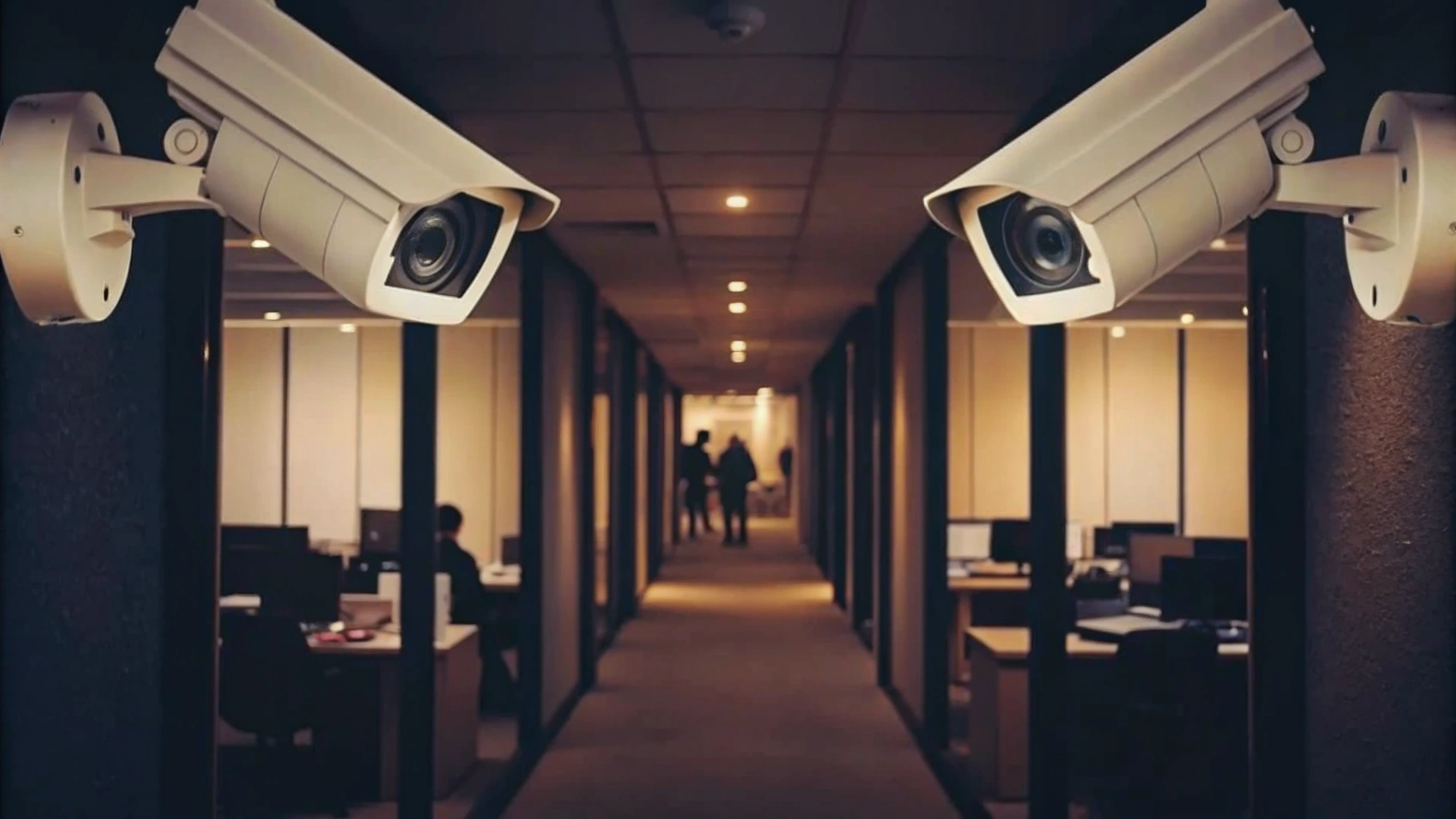
Data Protection Impact Assessment: A Necessity for CCTV Implementation
Conducting a Data Protection Impact Assessment (DPIA) is a critical step before implementing CCTV in workplace law UK surveillance camera systems. This assessment identifies potential privacy risks and outlines effective strategies for mitigation. By documenting the purpose of the surveillance installation, specifying monitored areas, and defining footage retention periods, managers can ensure compliance with data protection laws and demonstrate accountability.
In the UK, around 60% of organisations acknowledge the importance of DPIAs for their CCTV in workplace law UK systems, indicating a heightened awareness of privacy issues. A well-executed DPIA not only protects individual rights but also strengthens the overall security framework of the workplace.
For instance, in a recent construction project, a comprehensive DPIA led to the successful identification of privacy risks associated with camera placements. This proactive approach allowed the manager to adjust camera positions, ensuring compliance with legal standards while maintaining effective surveillance. Such instances highlight the necessity of DPIAs in creating a secure and legally compliant environment.
Ultimately, a DPIA serves as an essential resource for location managers, ensuring that the deployment of CCTV in workplace law UK is done responsibly and transparently, in line with legal requirements and best practises in workplace security. Priority First's video monitoring services enhance this process by offering real-time observation and threat detection capabilities, ensuring continuous surveillance of your property. This integration aids site managers in achieving compliance and improving safety.

Protection of CCTV Recordings: Safeguarding Sensitive Information
Under CCTV in workplace law UK, surveillance camera recordings are classified as sensitive personal information, necessitating stringent protection against unauthorised access. Site managers must implement robust security measures, such as encryption techniques like AES, to ensure the security of this footage. Access controls are critical; only authorised personnel should be allowed to view or share recordings, thus minimising the risk of data breaches. Priority First’s tailored surveillance monitoring services can assist in establishing these access controls effectively.
Establishing clear guidelines regarding access to surveillance footage is essential. These policies should delineate who is permitted to view the recordings and under what circumstances, ensuring compliance with GDPR regulations. Regular audits of access logs can enhance accountability and transparency, with Priority First offering support in implementing these audits.
Best practices also dictate conducting a Data Protection Impact Assessment (DPIA) prior to installing or upgrading surveillance systems, in accordance with CCTV in workplace law UK. This proactive approach identifies potential risks and ensures that appropriate measures are implemented to mitigate them. Furthermore, organisations should adopt structured backup and retention policies to prevent data loss, ensuring footage is retained only for the legally required period, typically 30 days unless needed for investigations. Priority First’s integration capabilities can streamline these processes.
Real-world examples highlight the significance of these practices. For instance, Greater Manchester Police faced serious repercussions for failing to secure video footage, leading to a reprimand and the establishment of enhanced retention policies. Such incidents underscore the necessity of protecting sensitive information to comply with regulations and safeguard personal privacy rights.
In summary, managers must take a comprehensive approach to securing video recordings in accordance with CCTV in workplace law UK, integrating advanced security measures, clear access policies, and regular audits to effectively protect sensitive information. Priority First offers customised security solutions, including extensive surveillance monitoring and integration services, ensuring enhanced safety and compliance for your construction site.
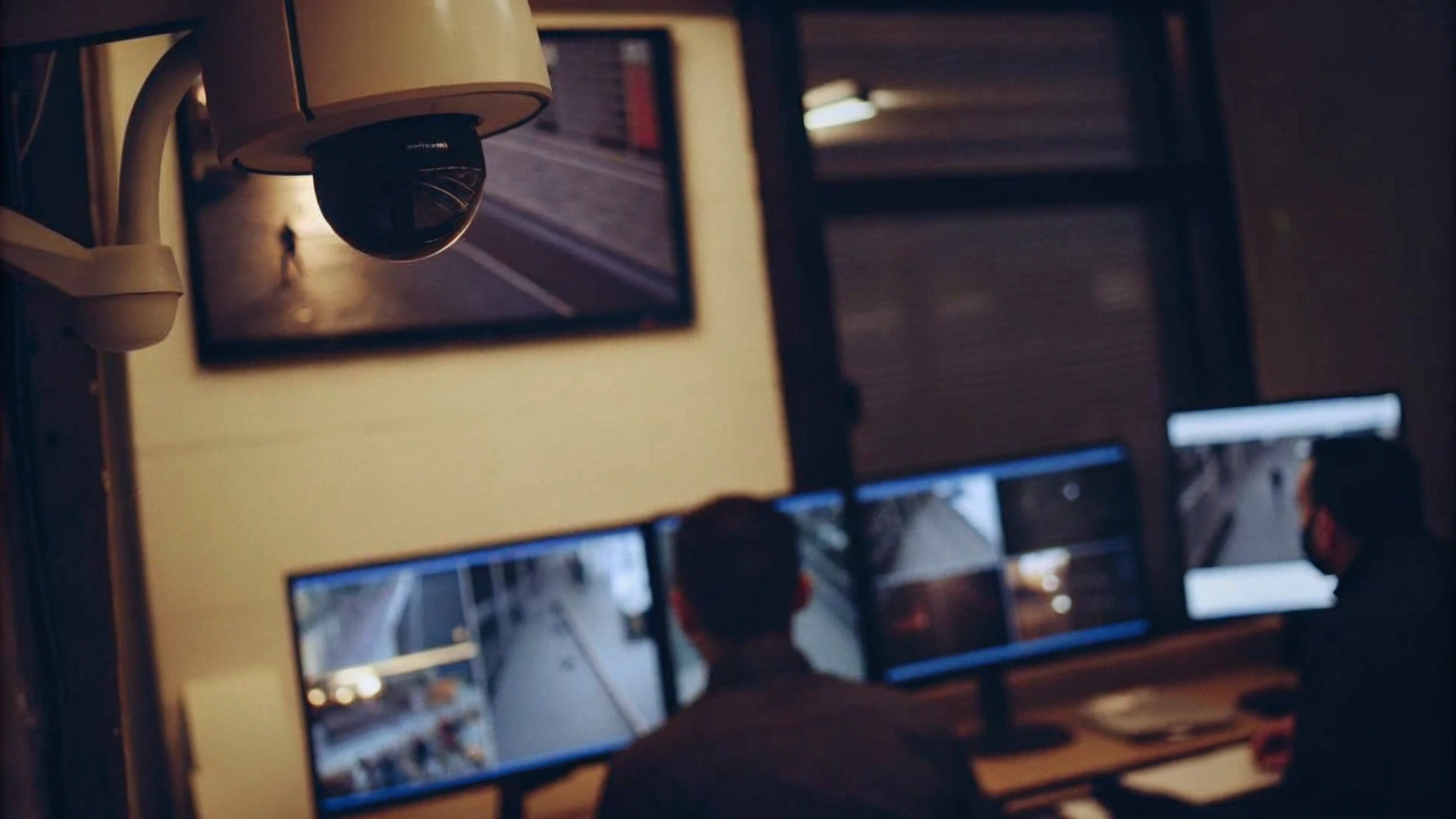
Sensible Placement of CCTV Cameras: Best Practices for Compliance
When installing CCTV cameras, it is crucial to consider their placement in accordance with CCTV in workplace law UK to ensure compliance with privacy laws. Cameras should be positioned in public areas where individuals have no reasonable expectation of privacy, such as entrances, exits, and common spaces. Sensitive locations, like restrooms or changing rooms, must be avoided to prevent legal complications and maintain employee trust. For instance, James, a bar proprietor, effectively installed surveillance cameras to monitor his terrace and entrance, ensuring that the devices did not infringe upon the privacy of passersby. This method not only complies with CCTV in workplace law UK but also promotes a secure environment.
Shared spaces within workplaces, such as lobbies and hallways, are ideal for surveillance system installation, as they help deter unauthorized activities while respecting individual privacy rights. By adhering to these best practices, site managers can effectively balance security needs and compliance obligations, especially in relation to CCTV in workplace law UK. The lesson is clear: thoughtful placement of CCTV systems is not merely a legal requirement; it is a fundamental aspect of fostering a trustworthy and secure business environment.

Data Retention Policies: Avoiding Excessive CCTV Data Storage
Establishing a robust data retention policy is essential for the effective management of surveillance footage. Organisations should retain recordings solely for the period necessary to fulfil their intended purpose, typically not exceeding 30 days. This practise is in line with UK regulations, which mandate that footage be securely deleted after the retention period to comply with data protection laws and reduce the risk of data breaches.
The reality is that improper handling of surveillance footage can result in significant legal repercussions, underscoring the necessity for organisations to routinely review their storage practises. By adhering to these guidelines, businesses can ensure compliance, safeguard personal data, and uphold operational integrity.
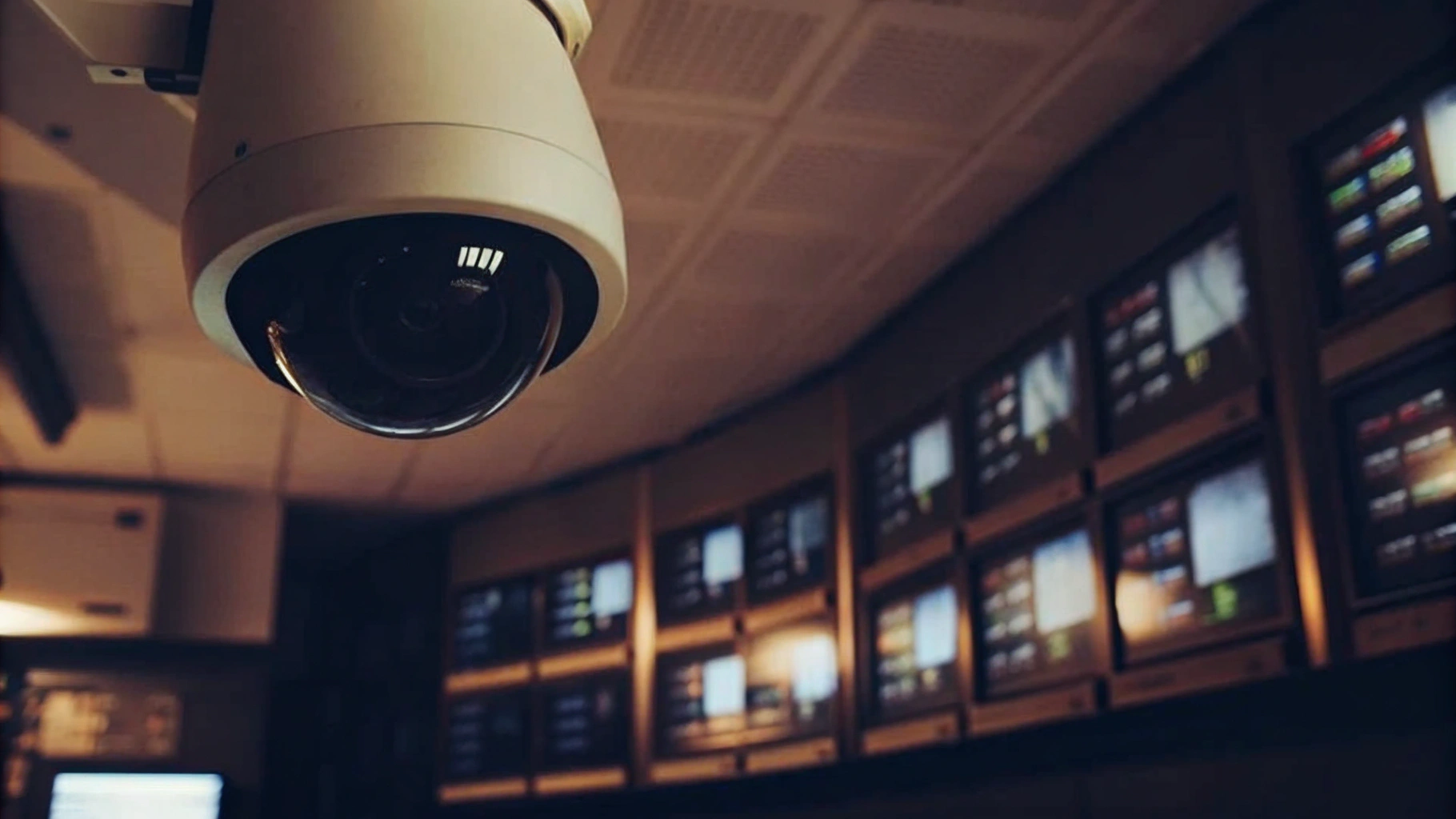
Informing Staff About CCTV: Ensuring Transparency and Compliance
Employers must inform staff about the presence of CCTV in workplace law UK cameras and their purpose, thereby fulfilling legal obligations and fostering a culture of transparency. This requirement can be effectively met through clear signage and comprehensive communication during staff onboarding. By ensuring that employees are aware of monitoring practices, organisations not only comply with the CCTV in workplace law UK, the Data Protection Act, and UK GDPR but also cultivate trust within the workplace.
Research indicates that 85% of UK employers monitor their staff in some capacity, with nearly half of workers expressing stress about being observed. This underscores the necessity of transparency in oversight to alleviate stress and create a positive work environment. Effective communication strategies include:
- Clear signage
- Regular updates on surveillance policies
- Internal communications—such as emails—that detail the purpose and scope of video monitoring
Open discussions during team meetings can further reinforce this transparency, as employers must clearly outline the extent of monitoring in the staff handbook or contract. Moreover, it is crucial for site managers to routinely evaluate and update their workplace surveillance policies, particularly regarding CCTV in workplace law UK, to ensure compliance and maintain employee trust.

Key Takeaways on CCTV and Workplace Law in the UK
Site managers must prioritise adherence to CCTV in workplace law UK and surveillance regulations. The reality is that effective implementation and management of CCTV in workplace law UK systems is essential for both security and compliance. Here are essential takeaways:
-
Compliance with GDPR and the Data Protection Act: All surveillance operations must adhere to GDPR, which classifies footage that can identify individuals as personal data. This includes registering with the Information Commissioner’s Office (ICO) and paying the necessary data protection fee.
-
Conduct a Data Protection Impact Assessment (DPIA): Before installing surveillance cameras, site managers should conduct a DPIA to evaluate potential privacy risks. This ensures that monitoring measures are necessary and proportionate to the security needs of the site.
-
Protect Surveillance Footage from Unauthorised Access: Implement strict access controls and encryption for stored recordings. Only authorised personnel should have access to recordings, and a log must be maintained to track who accesses footage and for what purpose.
-
Place Cameras Sensibly: Position cameras to cover relevant areas while avoiding filming private spaces or neighbouring properties. This helps prevent privacy infringements and aligns with legal requirements.
-
Establish Clear Data Retention Policies: Develop and document a retention schedule for surveillance footage. Recordings should be deleted once they are no longer necessary, typically within 30 days. Automated deletion systems can assist in regulatory adherence and reduce storage costs.
-
Inform Staff About Monitoring Practises: Transparency is crucial. Notify staff about the existence of surveillance cameras, their function, and their rights concerning recorded footage. This fosters trust and compliance with privacy regulations.
By adhering to these best practises, site managers can effectively navigate the complexities of surveillance regulations, such as CCTV in workplace law UK, ensuring both security and respect for individual privacy rights. Furthermore, statistics show that businesses that implement security cameras experience a 50% reduction in employee theft and shoplifting, highlighting the efficiency of surveillance systems. Priority First provides extensive video surveillance monitoring services that not only improve security through constant observation and immediate response capabilities but also integrate smoothly with current systems, ensuring minimal disruption during implementation. It is essential to follow strict protocols when using surveillance cameras in the workplace. A surveillance compliance checklist can further assist site managers in ensuring they meet all necessary regulations while benefiting from the tailored security solutions provided by Priority First.
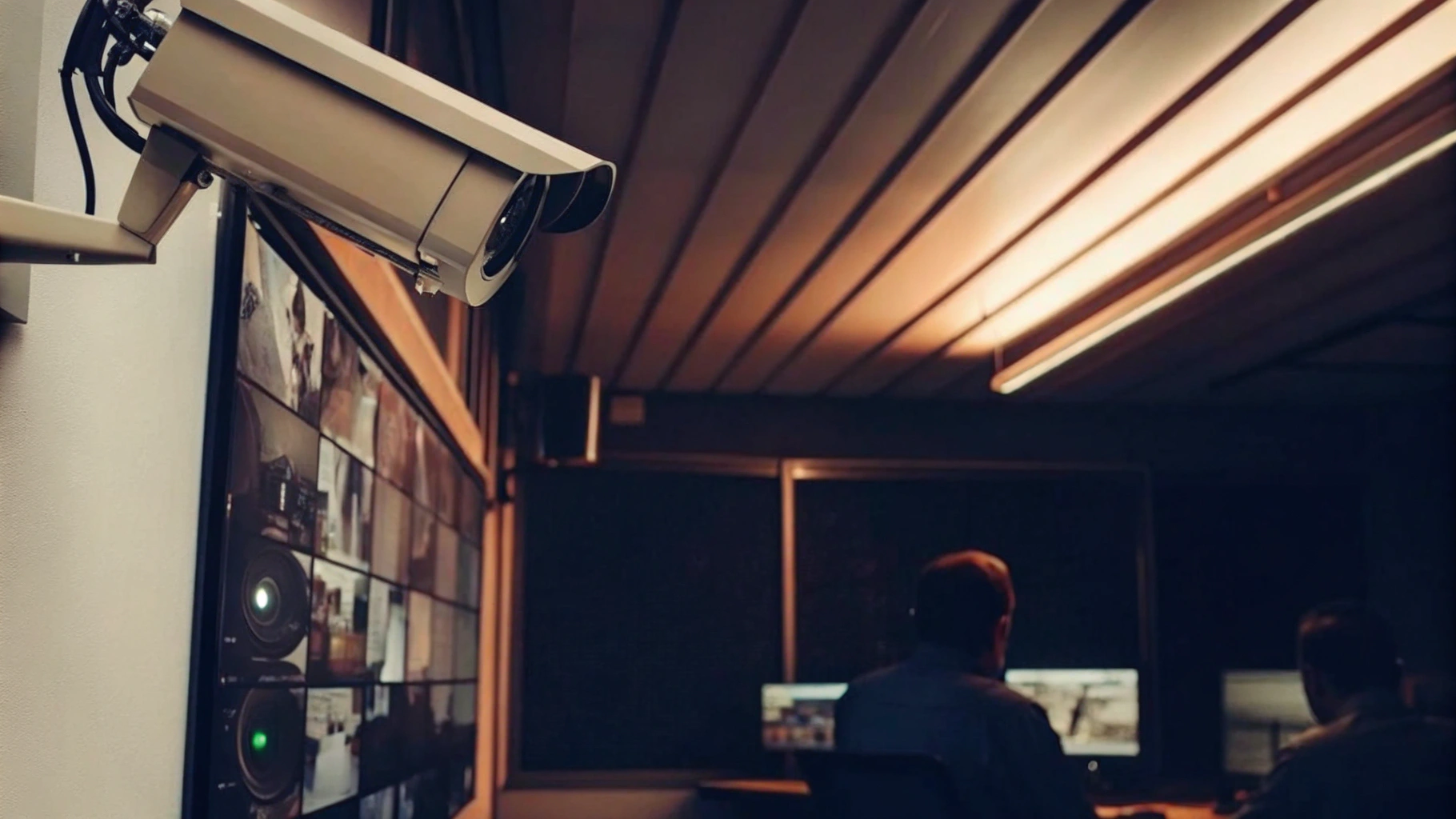
Frequently Asked Questions About CCTV in Workplace Law
-
CCTV in workplace law UK can be permissible, provided that the use of surveillance cameras complies with data protection laws, including the Data Protection Act and GDPR. These regulations necessitate a clear justification for surveillance and the proper handling of footage.
-
Employee notification regarding surveillance cameras is essential. Transparency is crucial; staff must be informed about the presence of CCTV in workplace law UK and the rationale behind their use, ensuring compliance with legal obligations.
-
The retention period for surveillance footage typically should not exceed 30 days, unless necessary for legal reasons, such as ongoing investigations.
-
Surveillance footage can indeed be utilised for disciplinary actions. However, this is contingent upon staff being informed about the monitoring, and the footage must be relevant to the specific case at hand.
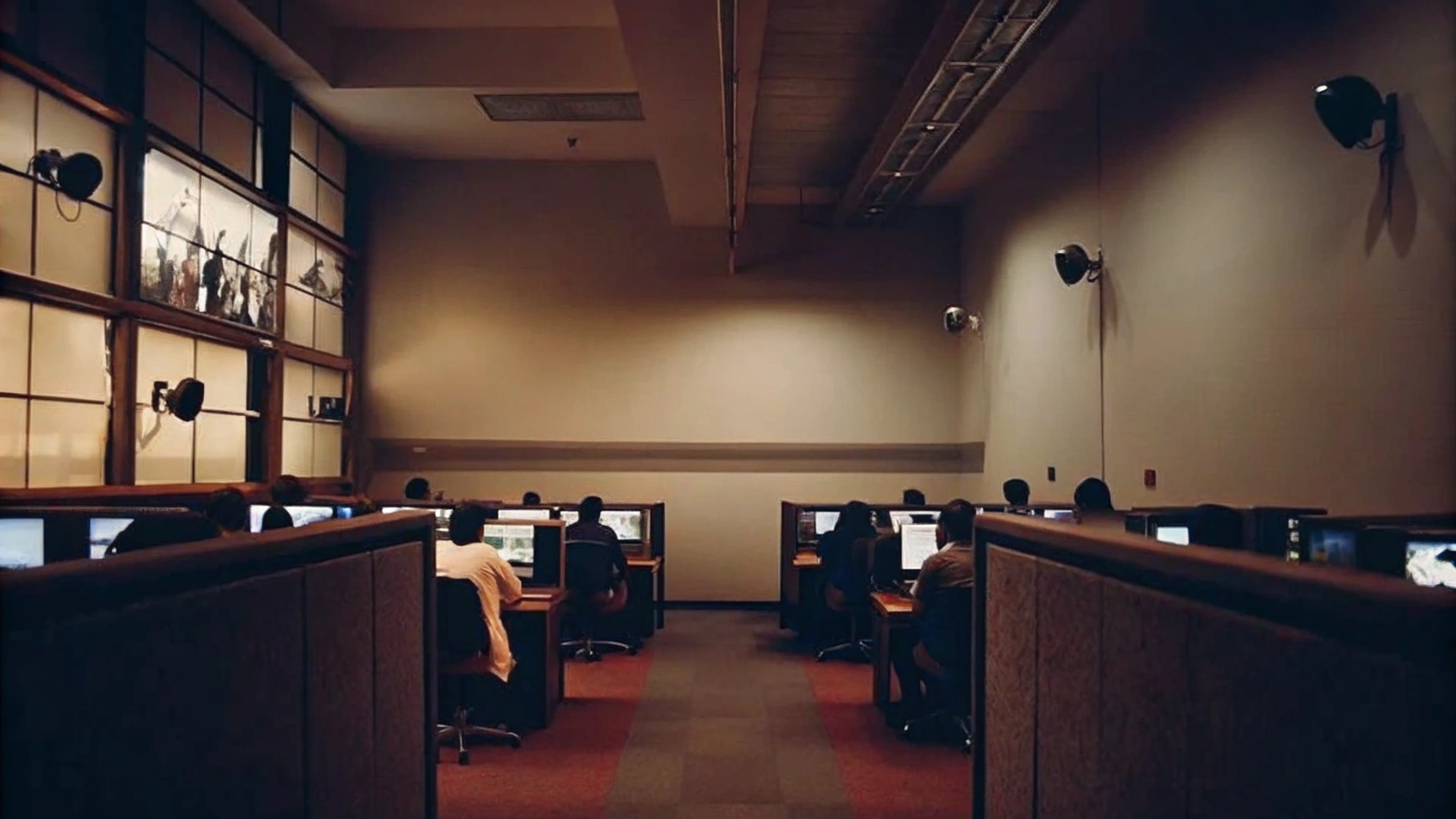
Ongoing Training on CCTV Regulations: Staying Compliant in the Workplace
Continuous education on surveillance camera regulations is essential for ensuring compliance in the workplace. Organisations must conduct regular training sessions to keep staff informed about legal requirements, best practises, and any updates in legislation. This proactive approach not only promotes adherence but also enables staff to understand their rights and duties regarding workplace monitoring.
Educational establishments have increasingly embraced comprehensive training programmes to enhance understanding of surveillance policies. The reality is that this results in improved compliance rates. Moreover, companies that emphasise training frequently observe a notable decrease in violations, as staff members become more conscious of the ethical and legal ramifications of surveillance.
By investing in continuous education, organisations can effectively navigate the complexities of CCTV in workplace law UK. In practise, this ensures that their practises align with current regulations and uphold employee privacy rights. The lesson is clear: early investment in training prevents greater compliance issues later.

Conclusion
Implementing CCTV systems in the workplace is not merely about enhancing security; it is fundamentally tied to fulfilling legal obligations under the CCTV in workplace law in the UK. Site managers face the challenge of navigating complex surveillance regulations while upholding employee rights. Understanding the legal framework, including the Data Protection Act 2018 and GDPR, enables managers to implement surveillance measures that protect the workplace and promote a culture of transparency and trust.
Key insights underscore the necessity of:
- Conducting Data Protection Impact Assessments (DPIAs)
- Establishing clear data retention policies
- Ensuring sensible camera placement
These practises are vital for maintaining compliance and safeguarding sensitive information. Informing staff about monitoring practises is crucial for fostering trust and alleviating concerns about privacy invasion. Notably, statistics reveal a significant reduction in incidents in workplaces equipped with surveillance cameras, highlighting the effectiveness of these systems.
The integration of comprehensive training programmes on CCTV regulations is essential for ongoing compliance. By investing in education and awareness, organisations can adeptly navigate the evolving landscape of workplace surveillance, ensuring their practises align with current regulations while respecting employee rights. Adopting these best practises will not only enhance security but also contribute to a safer and more compliant workplace environment.
Frequently Asked Questions
What is Priority First CCTV Monitoring?
Priority First CCTV Monitoring provides advanced video surveillance solutions that enhance workplace security compliance with CCTV laws in the UK. It allows managers to conduct real-time observations, helping meet safety regulations and legal standards.
How does Priority First enhance workplace safety?
By utilising sophisticated surveillance systems, Priority First mitigates risks associated with non-compliance and improves overall site safety. Environments with surveillance cameras have shown a significant reduction in incidents and improved adherence to safety protocols.
What role does AI play in CCTV monitoring?
AI technology in CCTV systems can detect unsafe behaviours, such as employees not wearing protective gear, and monitor compliance with health and safety protocols, leading to fewer accidents and improved operational efficiency.
What are the privacy concerns associated with CCTV in the workplace?
There are concerns regarding privacy invasion and diminished employee morale due to surveillance. Employers must balance the need for monitoring with respect for employee privacy rights, ensuring that surveillance is limited to areas with low expectations of privacy.
What are the legal implications of using CCTV in the workplace?
The use of CCTV is governed by the Data Protection Act 2018 and GDPR, which require employers to have valid reasons for surveillance, inform employees about monitoring practises, and conduct a Data Protection Impact Assessment (DPIA) before installation.
What is a Data Protection Impact Assessment (DPIA)?
A DPIA is an assessment that identifies potential privacy risks associated with CCTV monitoring and outlines strategies for mitigation. It ensures compliance with data protection laws and helps demonstrate accountability.
What are the consequences of failing to comply with CCTV regulations?
Ignoring CCTV regulations can lead to significant legal consequences, including hefty fines and damage to an organisation's reputation. Companies may also face penalties for not conducting a DPIA or for improper use of surveillance footage.
How long should CCTV footage be retained?
CCTV footage should typically be retained for no longer than 30 days unless required for ongoing investigations. Organisations are expected to establish clear policies regarding the storage, sharing, and deletion of footage.
Why is transparency important in CCTV monitoring?
Transparency is crucial to maintain trust and respect for employee privacy rights. Employers must inform employees about monitoring practises and ensure that surveillance is justified and proportionate.
How can Priority First's services assist in achieving compliance?
Priority First's video monitoring services enhance compliance by offering real-time observation and threat detection capabilities, aiding site managers in maintaining a secure and legally compliant environment.


